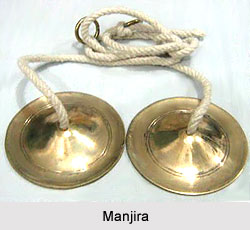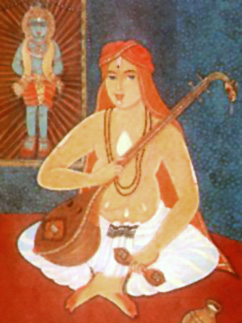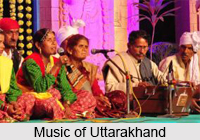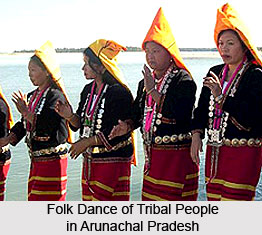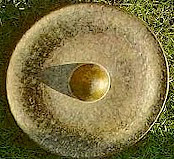 From time immemorial, the people of Mizoram have embraced the use of various musical instruments in their cultural practices and traditions. Although the exact origin of these instruments remains uncertain, historical records suggest that Mizo ancestors began using drums and composing songs during the late 10th to 13th century AD. Today, the traditional musical instruments of Mizoram, though simple and outdated compared to modern instruments, continue to play a vital role in the state`s folk music and cultural heritage. These instruments can be broadly categorized into three types: striking instruments, wind instruments, and string instruments.
From time immemorial, the people of Mizoram have embraced the use of various musical instruments in their cultural practices and traditions. Although the exact origin of these instruments remains uncertain, historical records suggest that Mizo ancestors began using drums and composing songs during the late 10th to 13th century AD. Today, the traditional musical instruments of Mizoram, though simple and outdated compared to modern instruments, continue to play a vital role in the state`s folk music and cultural heritage. These instruments can be broadly categorized into three types: striking instruments, wind instruments, and string instruments.
Striking Instruments of Mizoram
During festivals, dances, and other celebratory occasions, striking instruments take center stage. These instruments provide the rhythmic foundation for the music and create an energetic and vibrant atmosphere. The different sizes and types of drums and gongs offer versatility in sound and intensity, allowing musicians to evoke a range of emotions and moods. The striking instruments in Mizoram include a variety of drums, gongs, and other percussive instruments such as the Khuang and Dar, Bengbung, Seki, and Talhkhuang among many others.
Khuang (Drum): The Khuang, or drum, holds great significance in Mizo social and religious life. It is a hollowed-out tree trunk wrapped on both sides with animal skin. The Mizo people use different names to distinguish drums of various sizes and lengths. The larger ones are called Khuangpui (Big drum), the medium-sized ones are known as Khuanglai, and the smaller drums are called Khuangte (little drum). If the drum is elongated, it is referred to as Kawlkhuang.
According to historical evidence, the use of drums among the Mizo people can be traced back to their ancient singing and song composition practices. Some scholars believe that the Mizo might have adopted drums from Chinese civilization through cultural diffusion, possibly during their close cultural interactions with the Burmese between the 9th and 13th centuries AD. While drums previously held no religious significance, they have become an integral part of church services in modern times.
Dar (Gong):Another popular musical instrument in Mizoram is the gong. Different sizes of brass gongs are used, including Darkhuang, and Darmang. Darkhuang, the largest type, is considered a valuable possession. It is played on various occasions and was even used as a form of exchange in the past. Darbu, consisting of three brass gongs of different sizes, is played by experts who produce three distinct rhythmic notes. Darmang, the smallest gong, is used in traditional dances to maintain timing.
Darmang: It is the smallest gong. It needs to be played with other gongs. It is used in traditional dances in order to keep timing.
Darbu: This is a set of three brass-gongs that are of different sizes. It produces three musical notes. Generally this is played by three experts. It is used on certain occasions like Khuallam and group dances that are traditional.
Bengbung: Bengbung is an indigenous Mizo instrument that bears some resemblance to a xylophone. It comprises a series of flat wooden bars that produce three musical notes. Typically played by girls during their leisure time, the Bengbung adds a unique melodic element to Mizo music.
Talhkhuang: Similar to the Bengbung in terms of construction, the Talhkhuang is a larger instrument made of curved-out wooden pieces. By varying the depth of the curves, different notes are produced when struck with a wooden hammer. The Mizo people only take the Talhkhuang to Lungdawh, a significant platform at the entrance of the village, during specific events such as the erection of memorial stones.
Seki: The Seki is a percussion instrument made from the domesticated mithun`s horn. It is beaten to lead or maintain timing for other musical instruments like Darbu. The Seki was commonly used during group dances.
Wind Instruments of Mizoram
Wind instruments, such as Rawchhem, Tumphit, and Phenglawng, bring a melodic element to Mizo music. These instruments require skilled breath control and finger placement to produce specific notes and melodies. They are often used in traditional ceremonies and festivals, adding a haunting and ethereal quality to the music. Mizo culture features seven varieties of wind instruments, including Rawchhem, Tumphit, Mautawtawrawl, Phenglawng, Hnahtum, and Buhchangkuang.
Rawchhem:It is a type of Scottish "Bagpiper". Nine small Bamboo pipes of different sizes and lengths are inserted to the dried gourd. One of the pipe is used a mouth piece. Small portions of the pipes are struck out in order to produce sound when the instrument is blown.
Tumphit: It is made of three small bamboos which are of different sizes and length. These are tied and plated in a row with strings. At different length the upper ends are cut open in order to create different notes at each tube. Tumphit was used during ritual ceremonies, especially on Rallulam and chawng festival.
 Tawtawrawt: Tawtawrawt is a Bamboo trumpet. Bamboos are cut into different sizes. The smaller one is inserted to the bigger tube. Many are joined one after another till the last tube happens to be the size of a forefinger.
Tawtawrawt: Tawtawrawt is a Bamboo trumpet. Bamboos are cut into different sizes. The smaller one is inserted to the bigger tube. Many are joined one after another till the last tube happens to be the size of a forefinger.
Phenglawng: This is the Mizo flute that is made of bamboo. This actually had only three holes that produce three different sounds.
Buhchangkuang: This is a flute that is made of reed or a paddy stalk. This is generally played by girls.
Hnahtum: Leaves of many trees produce interesting sounds. The Mizo boys blow it deftly.
Stringed Instruments of Mizoram
The stringed instruments, including Tingtang, Lemlawi, and Tuiumdar, offer a diverse range of sounds and textures. They can be played individually or in accompaniment to vocals or other instruments. The Mizo guitar, Tingtang, has gained popularity among the younger generation and has become an integral part of modern Mizo music. However, the traditional stringed instruments still hold their significance and are appreciated for their unique timbre and cultural heritage. The Mizo also have a few stringed instruments in their musical repertoire. These instruments include Tingtang, Lemlawi, and Tuiumdar.
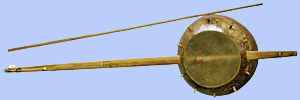 Tingtang: Tingtang is often referred to as the Mizo guitar. It is a type of fiddle or violin with only one string. A piece of bamboo shaft is fixed in a gourd to serve as the instrument`s body, and the string is made of Thangtung, which is the fiber of the Malay Sago palm. The hollow gourd is cut open and covered with a dry bladder from an animal. Tingtang produces unique and melodious sounds and is played by skilled musicians who use a bow to create beautiful music.
Tingtang: Tingtang is often referred to as the Mizo guitar. It is a type of fiddle or violin with only one string. A piece of bamboo shaft is fixed in a gourd to serve as the instrument`s body, and the string is made of Thangtung, which is the fiber of the Malay Sago palm. The hollow gourd is cut open and covered with a dry bladder from an animal. Tingtang produces unique and melodious sounds and is played by skilled musicians who use a bow to create beautiful music.
Lemlawi: Lemlawi belongs to the family of Jew`s harp but has a distinct shape and size. It is made of small pieces of bamboo, and a portion of the bamboo is carved out to create a string. The sound produced by Lemlawi is controlled by the musician`s mouth. By manipulating their breath and mouth position, they can create varying tones and melodies. Lemlawi is a simple yet fascinating instrument that adds a unique flavor to Mizo music.
Tuiumdar: Tuiumdar is a simple bamboo instrument with three strings that produce three different notes. The cane-like strings are curved out from the outer covering of the bamboo, and two additional bamboo pieces raise the strings. Tuiumdar is played in a manner similar to a guitar, and its strings can be plucked or strummed to create rhythmic and harmonic sounds. It is often used by individual musicians for personal enjoyment or intimate performances.
Role of Musical Instruments in Mizo Culture
The traditional musical instruments of Mizoram hold great cultural significance and are deeply intertwined with the social and religious life of the Mizo people. The beating or striking instruments, wind instruments, and stringed instruments all play essential roles in various aspects of Mizo culture.
Music is deeply ingrained in the fabric of Mizo society. It is an essential part of their everyday lives, accompanying both joyful and sorrowful occasions. Mizo people sing songs of joy and celebration during weddings and festivals, as well as songs of condolence during times of mourning. The harmonious singing and rhythmic tribal songs of the Mizo are not only a form of artistic expression but also a means of connecting with their cultural roots and conveying their emotions.
The traditional musical instruments of Mizoram play a vital role in preserving and celebrating Mizo culture. The striking, wind, and stringed instruments are integral to various aspects of Mizo music and are used in religious ceremonies, festivals, and everyday life. They provide rhythm, melody, and texture to the music, creating a rich and diverse musical landscape.
